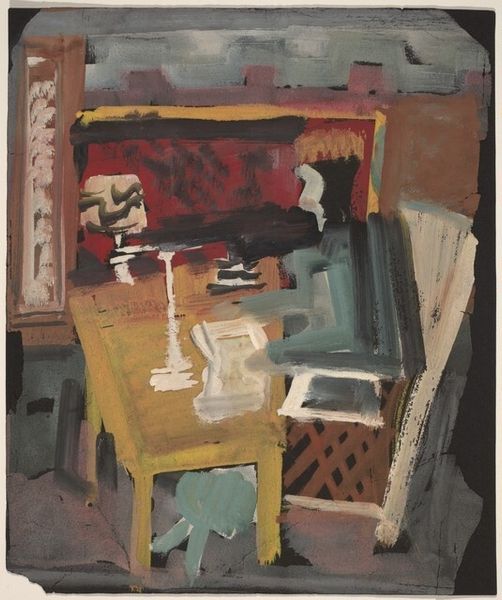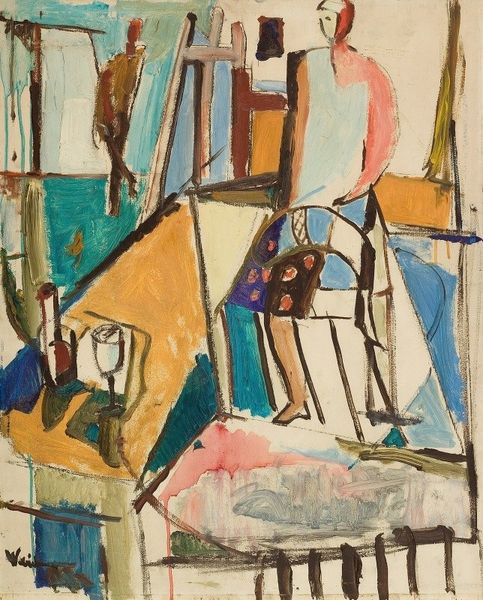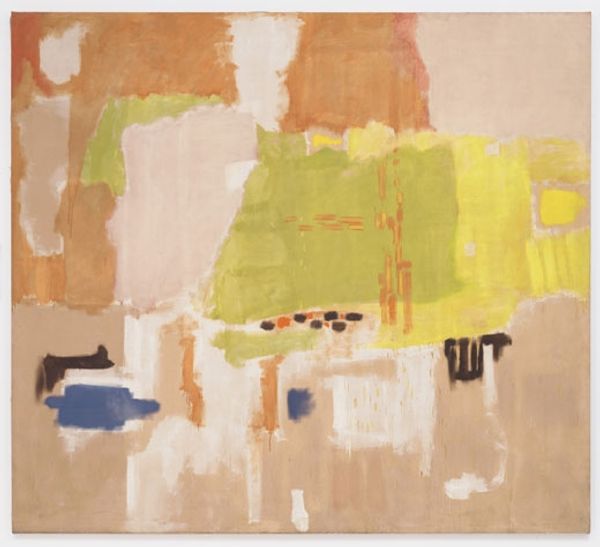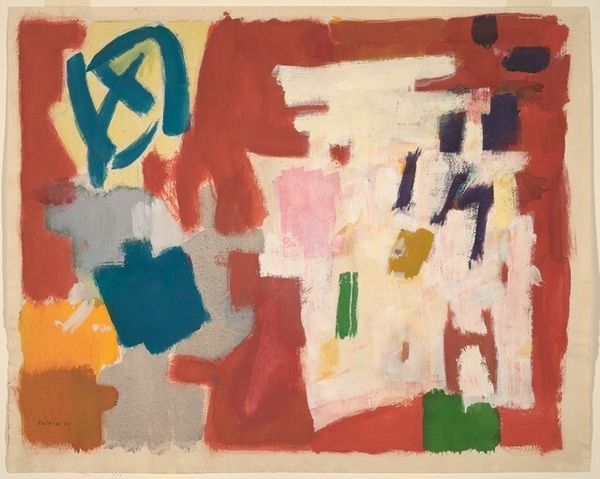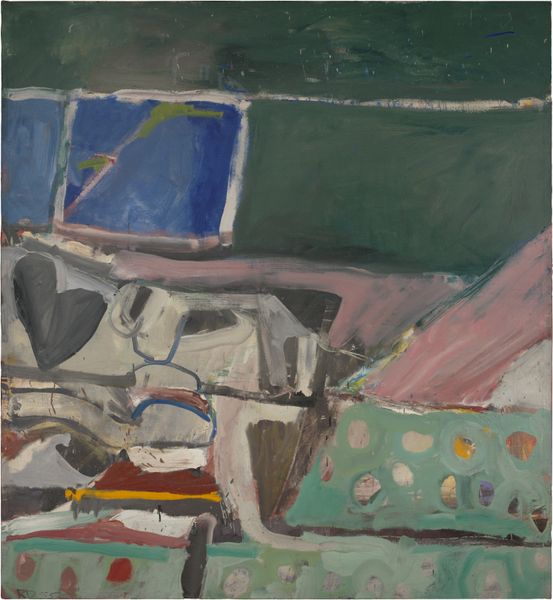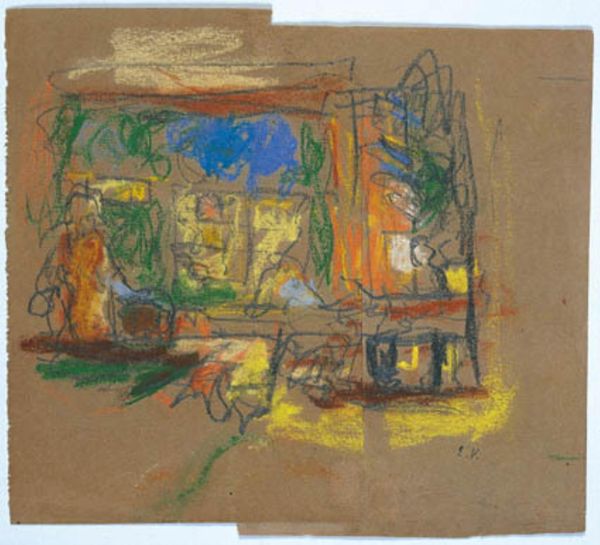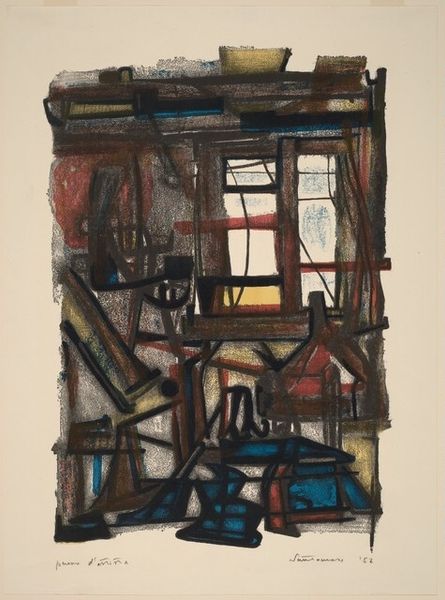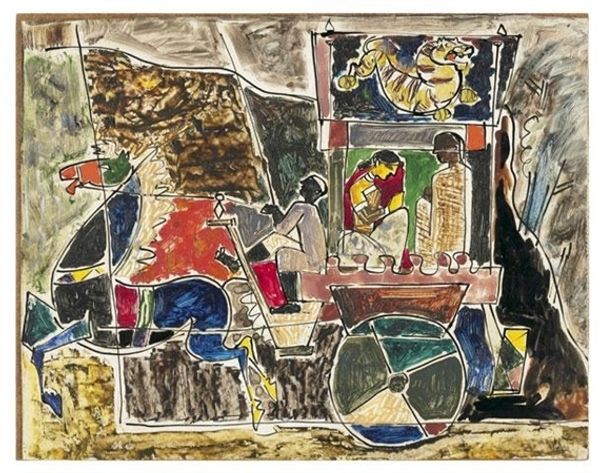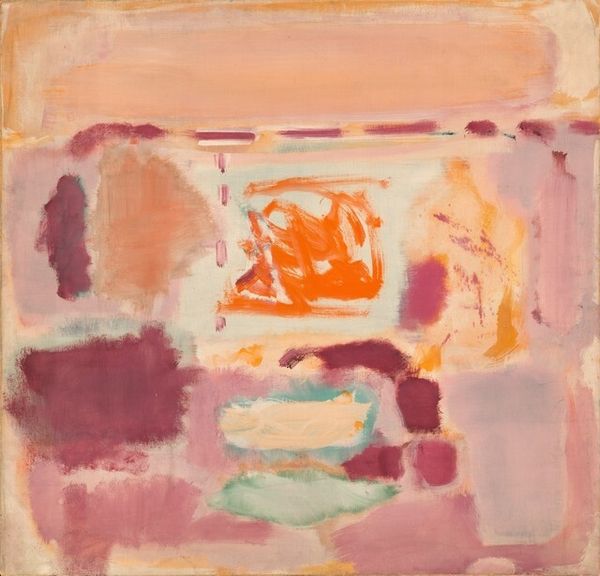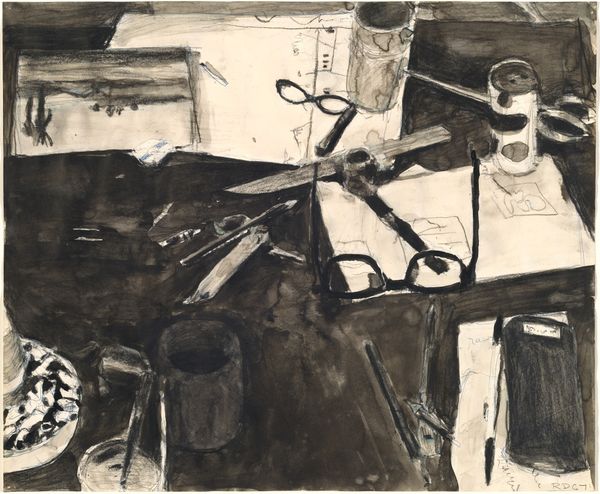
drawing, watercolor
#
portrait
#
drawing
#
water colours
#
figuration
#
oil painting
#
watercolor
#
acrylic on canvas
#
group-portraits
#
watercolor
Copyright: National Gallery of Art: CC0 1.0
Curator: What a fascinating piece to consider! This watercolor by Mark Rothko presents "Seated Figure Behind a Desk and Two Standing Figures." The application is quite loose and expressive. Editor: My initial reaction is how immediate it feels, like a quick study almost. The colours, although muted, create a strange sense of tension. What context would you place it in, looking at its social implications? Curator: It invites inquiry into the roles people play within systems of power and spectatorship. Who is at the desk and those attending or under review? Is there an act of governance, surveillance, teaching being depicted here? Rothko came from an immigrant background so this idea of power relations would have likely been pertinent in the background, what are your thoughts regarding the social process or the means of production here? Editor: I agree, there's a formality conveyed in its execution through this sort of staging of a set with protagonists within it, almost like theater. And looking at the watercolor application—the medium here gives it immediacy. The thin layers of colour let the materiality of the paper be visible, almost acting as the means of unveiling a certain labor to be critiqued. The artist leaves traces for interpretation, doesn’t he? Curator: Absolutely. The gestural approach seems significant when we think about labour. Also the globe which features on the backdrop adds more dimensions when the painting may be read as critique to Western governance for example. Are the protagonists in conversation about environmental concerns or global relations in general? What are the papers lying on the desk referring to? How do you consider Rothko as trying to convey meaning here? Editor: He allows it through materiality. He foregrounds process, by letting these elemental components interact openly. It's very process-based in that way; and this process makes explicit reference to how material components or the people represented contribute towards the image/narrative that is taking place. It's about acknowledging labour and production through material form. Curator: That is an extremely helpful take! The work’s social commentary combined with formal aspects offers a compelling case study in the intersections of art, society, and personal identity and even in production of knowledge. Editor: It offers much food for thought for scholars, historians, makers. It asks us to constantly engage in social investigation of our times through visual production.
Comments
No comments
Be the first to comment and join the conversation on the ultimate creative platform.
